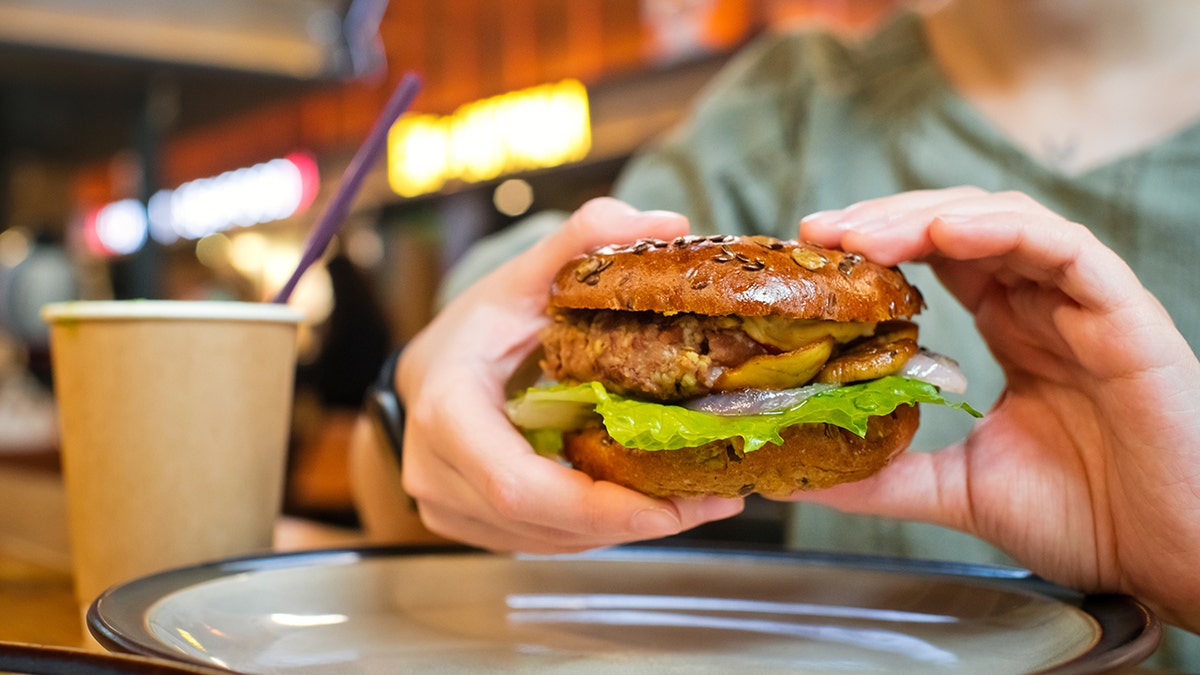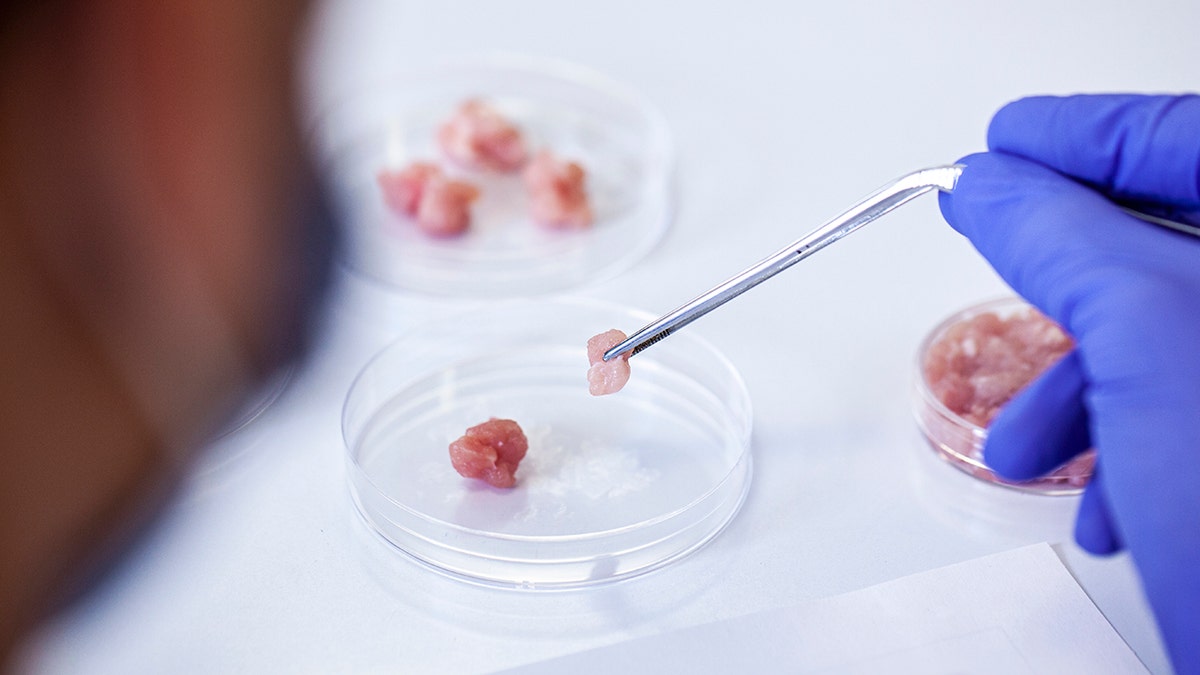NEWYou can now listen to Fox News articles!
As the market for protein alternatives evolves, scientists are testing hybrid approaches that blend traditional and novel sources — but not everyone’s convinced it’s the recipe for the future.
A new research review from Tufts University and the University of Massachusetts Amherst found that combining plant proteins — often soy, pea or wheat — with meat, cultivated animal cells, fungi, insects or microbially derived proteins could produce foods that taste more like real meat, offer better nutrition and shrink their environmental footprint.
“The main goal is to increase the health and sustainability of the modern food supply by combining the benefits of different protein sources,” David Julian McClements, distinguished professor of food science at UMass Amherst, told Fox News Digital.
LAWMAKERS BAN ‘VEGGIE-BURGER’ TERM, LIMIT MEAT DESCRIPTIONS IN EU
The study, co-authored by McClements and Tufts professor David L. Kaplan, was published in Frontiers in Science in late September.
Researchers claim affordable, nutritious meat alternatives are needed to reduce reliance on industrial farming, lower carbon emissions and health risks, and help prevent future pandemics tied to livestock.
But the traditional meat industry isn’t buying it.

While plant proteins are cheap and scalable, they often lack the flavor and texture of meat, the researchers said. (iStock)
“Not a single person outside Silicon Valley is asking for sprawling, data center-like facilities to pop up all over rural America and start churning out ultra-processed, inferior food,” Ethan Lane, vice president of government affairs for the National Cattlemen’s Beef Association, based in Colorado, told Fox News Digital.
“The protein harvested from a fungus, pile of bugs or industrial-sized bioreactor will never outcompete real American beef.”
Mixing strengths
Hybrid foods could also address the weaknesses of current plant-based products, which often lack flavor and texture and are seen as overly processed. Combining different proteins can also help balance essential amino acids.
Each protein source brings something to the table, the researchers wrote. Plant proteins are cheap and plentiful, yet they fall short on texture. Mycelium — the root-like structure of fungi — mimics the fibrous chew of meat. Cultivated meat brings authentic flavor and nutrition but remains costly to scale.
“By combining them with plant-derived ingredients, it is possible to make more economically feasible foods,” McClements said.
GUT HEALTH AT STAKE AS RESEARCHERS PUT BEEF AND CHICKEN TO THE TEST
Still, researchers acknowledge that lowering costs alone won’t guarantee widespread adoption.
Dan Blaustein-Rejto, director of food and agriculture at the California-based think tank the Breakthrough Institute, said research shows Americans rarely cut back on meat, even when cheaper plant-based options are available.
“That implies that substantial improvements are needed — not just in price, but also in taste, texture and nutrition — to appeal to more people,” he told Fox News Digital.

Mycelium, the root-like network of fungi, can be blended with proteins to create hybrid foods with a more natural texture. (iStock)
Insects, meanwhile, deliver high-quality protein and healthy fats with a tiny environmental footprint, according to the study. Microbial fermentation — using yeast or bacteria to produce proteins, vitamins and natural flavors — can also make hybrid foods look and taste more like meat while cutting the need for additives.
“Hybrid foods could give us delicious taste and texture without breaking the bank or the planet,” Kaplan said in a news release.
From lab to plate
Researchers claim cultivated cells can be taken from animals without harm, grown in bioreactors and blended into plant-based foods for added flavor and texture.
TEST YOURSELF WITH OUR LATEST LIFESTYLE QUIZ
Hybrid products already exist in limited forms, including sausages or burgers that mix mycelium or grains with animal or egg proteins, or Singapore’s cultured-meat-and-plant blends.
“As with all novel foods, it is critical to assess the safety and nutritional profiles of hybrid food products.”
“Meat is often mixed with vegetable sources such as grains to extend it,” McClements said. “This was true in the sausages that I grew up eating in the U.K.”
Plant–mycelium blends are likely to reach consumers first, as they’re already in limited commercial use.
CLICK HERE TO SIGN UP FOR OUR LIFESTYLE NEWSLETTER
Only a few countries, including the U.S. and Singapore, currently allow cultivated meat for sale.

Several states have banned or restricted the manufacture and sale of lab-grown meat. (iStock)
In the U.S., however, the regulatory picture remains patchy. While federal agencies have approved limited cultivated-meat sales, some states — including Alabama, Florida and Texas — have moved to ban or restrict the manufacture and sale of lab-grown meat products.
Challenges and next steps
Beyond regulation, the biggest hurdles are price, production scale and consumer acceptance, McClements said.
CLICK HERE FOR MORE LIFESTYLE STORIES
“As with all novel foods, it is critical to assess the safety and nutritional profiles of hybrid food products,” he said.
While no protein source is perfect, he said hybrids create products that are “more than the sum of their parts.”
CLICK HERE TO GET THE FOX NEWS APP
The concept could eventually expand beyond meat to include insect-plant, mycelium-plant or milk-plant blends, he said.
Progress, the researchers said, will depend on collaboration among scientists, regulators and the food industry to standardize testing, expand production and build consumer trust.


Leave a Comment